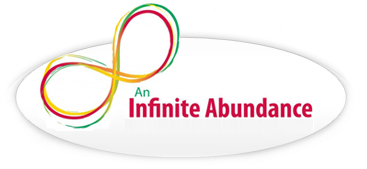Thank you for participating in the 21 week affirmation challenge. I hope that you’ve put the affirmations to use each week, repeated them throughout the days, enjoyed these exercises, and benefitted from them.
This week, I want to talk about a work PASSION of mine that, in due time, will solve a problem that helps change the world- Reiki Energy Healing.
I was introduced to Reiki Energy Healing by a coworker about 15 years ago. Due to the stresses at my job in the medical field, I was becoming negative, bitching and moaning, needed my “drive home drink” (a can of coke), taking my work attitude home with me, and lastly, driving into work with stress-related chest pains.
My first session was amazing and relaxing. I felt a difference right away. I ended going in for sessions about every three weeks for over two years- yes, I was hooked and I felt great. It literally saved my life. At the same time, I started to meditate regularly to keep the daily stresses at bay.
I became interested in the Healing Arts and wanted to become certified so I could help others feel good and get better as I had. I am certified as a Reiki Master Teacher, meaning that I can teach and certify others through each of the certifications. It is my goal, through collaborations and partnerships, to help 1,111,111+ people, globally, with their health and well-being.
What is Reiki Energy Healing?
Reiki healing is a form of alternative therapy commonly referred to as energy healing. Originating from Japan, the practice of Reiki involves a practitioner placing their hands lightly on or over a person’s body to facilitate the individual’s process of healing. The practitioner can channel energy into the patient by means of touch to activate the natural healing processes of the patient’s body and restore physical and emotional well-being.
The term “Reiki” is derived from two Japanese words: ‘rei,’ meaning ‘universal,’ and ‘ki,’ meaning ‘life energy.’ This life energy is believed to flow through all living things; when one’s life energy is high, they are more likely to be healthy and balanced, both physically and emotionally. Conversely, when it is low, they are more likely to feel stressed or become ill. Reiki practitioners aim to increase a person’s supply of life energy to promote wellness.
Reiki is often described as a meditative and relaxing experience where practitioners use their hands to deliver energy to your body, improving the flow and balance of your energy to support healing. It is not tied to any particular religion or belief system and can be practiced by anyone who has been trained and certified to channel the energy. The practice is built on the idea that everyone has the ability to connect with their own healing energy and use it to strengthen energy in themselves and help others.
It is beneficial for most conditions and circumstances, supporting the body’s natural ability to heal itself and working on the body, mind, spirit, and emotions. Reiki is used for many purposes, including stress reduction, relaxation, symptom relief, and to improve overall health and well-being. It is a complementary therapy, which means it may be used in conjunction with other forms of healthcare, including traditional medicine, to enhance treatment effects.
Reiki helps the body create an environment to facilitate healing. Treatments have been described as a way to tune up your body to its healthiest state possible, allowing for healing to take place more quickly and effectively.
The practice has gained popularity in the Western world and is now used in various healthcare settings, including hospitals and hospices. Many individuals report positive experiences and a sense of improved well-being following Reiki sessions.
During a Reiki session, which typically lasts between 60 to 90 minutes, clients remain fully clothed while lying on a treatment table or sitting comfortably supported in a chair. Practitioners may use a series of hand positions hovering over or lightly touching the body, with each position held for a few minutes. The number of sessions varies based on the individual’s needs.
Some practitioners also incorporate elements such as crystals or chakra healing wands to enhance the practice, although these are not considered necessary for Reiki. The approach to Reiki is holistic, meaning it addresses the whole person rather than focusing on individual symptoms or diseases. It is a practice that can be learned by anyone interested in self-care, personal growth, and helping others.
While Reiki is a valuable part of a wellness or treatment plan, it should not replace conventional medical care. It’s important to consult with a healthcare provider for any medical conditions or symptoms. If you’re considering Reiki, it’s recommended to find a qualified practitioner who has received training from a reputable program.
In summary, Reiki healing is a gentle and non-invasive energy healing practice that aims to improve the flow and balance of energy in the body to support healing and well-being. It is a complementary therapy that can be integrated with other medical and therapeutic techniques to enhance health and promote relaxation and stress reduction.
If you have any questions about Reiki, whether it’s health related or interested in learning, please feel free to reach out to me.
See you next week!


